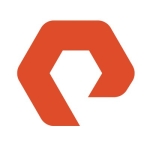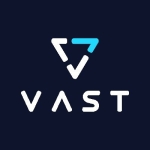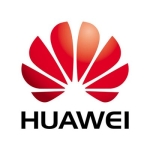What is most valuable?
The number one feature is speed. We're serving almost 3.2 million people, we're running an eligibility system, we are on about 80 terabytes of data that need to be churned and processed.
In addition, the standard Oracle features like the compression.
Right now, all of our development to pre-production, everything is in one single rack, which is easier for us to do. Production is on another rack, another full rack. That's what we use it for.
What needs improvement?
Pretty much whatever we need from the database side, it is there.
There are specific things from the application side; I don't have a list, they do have a list of what you can see from the database side.
Most of the developers are used to Microsoft .NET and SQL server. They are cutting out Oracle, so there is a shift within the developer's mind. "How am I going to, starting from the modelling, use it?"
Key items, like there's a 90-degree column in SQL that automatically fills in. It used to have triggers, but 12c is coming. There are some good features coming that I'm looking for. I was part of the session for what is new in 12c. I'm really excited about that.
We're doing real-time analytics, so another thing is whether noSQL may be the best fit or not. We need to evaluate, not done yet. We are thinking, we have Exadata, we have Endeca, so we want to use the product.
For how long have I used the solution?
Three and a half years, almost four years.
What do I think about the stability of the solution?
Absolutely stable. After we moved to Exadata the stability has been good. First, we used to go through Microsoft patching every month. With Exadata and Linux, we do only the firmware once in a quarter. It was really only required that we do it because we were behind two firewalls, so we didn't have to apply all the patches.
What do I think about the scalability of the solution?
Absolutely scalable. We have our own five enterprise applications. They're all public-facing systems. Again, going back to the performance. On a given day, anywhere between 5000 to 8000 internal people use them. We do have a public-facing system. People apply for benefits, and it's entirely public, so they can use it.
Compared to before, if you look at the performance, some of the applications are 30 to 40 percent improved. Some of the batches are almost 70% better. If you look at the back-end side, your export logical backups, and your disaster recovery, all those things, there is a tremendous increase.
How are customer service and technical support?
Support is pretty good. There are certain areas specific to the enterprise application, we may not be getting all the support. But for Oracle products in general, pretty good.
Which solution did I use previously and why did I switch?
Previously, we were on Sun Solaris, then we moved to a Windows platform, and it was really bad. The processing took too long. Start the load on Tuesday, Wednesday sometime around noon it would finish. Sometimes it would crash. Right now it is within four and a half hours. Starts at 6:00, 9:00 it's done. That is one big advantage we see.
How was the initial setup?
We brought Oracle in to set it up. We didn't go through the entire setup process because Oracle was part of it. Oracle itself did it, so it was pretty easy for us. One good thing was that we didn't have to worry about the patching, OS levels, and other stuff. It was pretty easy for us.
What other advice do I have?
When it comes to choosing a vendor, the primary criterion is support. When you have an issue, you need to immediately have a solution; it's a 24/7 application. For example, suppose we are going through patching, and something we don't anticipate comes up, I suddenly find an issue. I never saw that in my lower environments, and now production is impacted, so we create a severity-one ticket. How soon will it be resolved? can I trust it? That's number one.
There may be some custom solutions we may be looking for that are not part of the product. Depending on what type of solution it is, we may need additional support.
Also training. I think Oracle is growing fast. From '91 when I was with Oracle 6, I know how much it grew outside the databases. So training is one of the biggest issues that we are having. We moved from a Windows platform to a Linux platform, and also how to manage the entire thing. Enterprise Manager completely changed. So it is necessary to do some self-learning, but also vendor-provided training at a low-cost would help. Those are the things we are looking for.
On top of that, there are certain things that would be of benefit. There is a new release coming in. If they can provide us with the documents, really help our DBA's to be on the cutting edge, rather than they themselves having to explore.
I didn't give it 10 out of 10 because there are still be a few issues that we are working on, but from a performance point of view, ease of use, scalability and reliability everybody is happy with the product.
Disclosure: I am a real user, and this review is based on my own experience and opinions.












